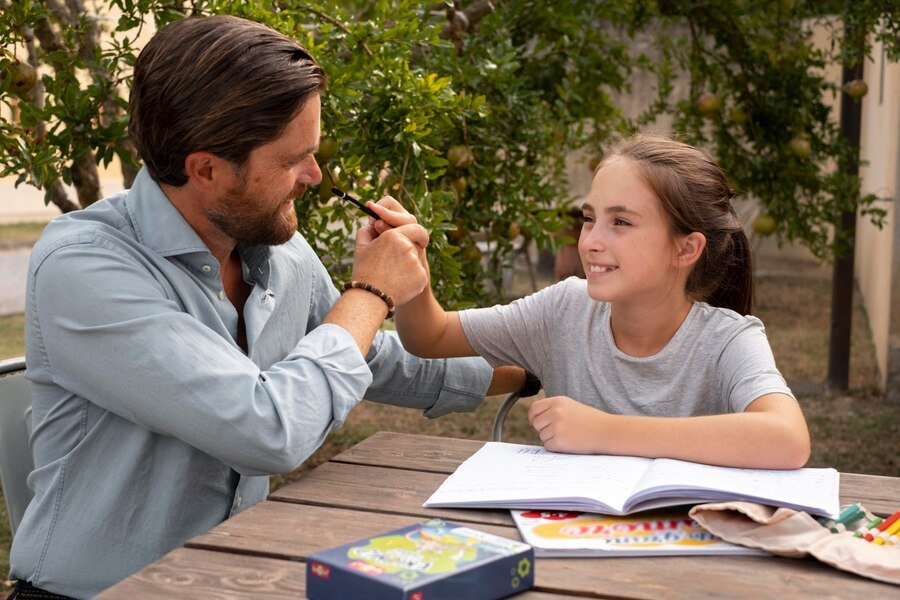Socioemotional development is a vital aspect of a child’s overall growth. It encompasses the ability to understand emotions, build relationships, and develop resilience—skills that lay the foundation for success in school, work, and life.
For parents, educators, and child psychologists, fostering socioemotional growth in children can often feel like navigating uncharted waters. This is where the expertise of specialists like David Castillo comes into play. A leading authority in socioemotional development, Castillo has dedicated his life to helping children thrive emotionally and socially.
In this blog, we’ll explore Castillo’s contributions to the field, break down key strategies for fostering socioemotional development, and provide actionable advice for parents, educators, and psychologists hoping to make a difference in children’s lives.
Who is David Castillo?
David Castillo is a renowned socioemotional specialist with decades of experience in child development. His deep-seated passion for understanding and nurturing the emotional lives of children has earned him recognition among parents, educators, and mental health professionals alike.
With a background in developmental psychology and child counseling, Castillo has worked across multiple settings, including educational institutions, family clinics, and community outreach programs. He is known for creating innovative frameworks that help children build emotional intelligence and social skills effectively.
One of Castillo’s hallmark contributions is his model for “SCAFFOLDING socioemotional learning,” an approach that emphasizes:
- Self-awareness: Helping children recognize their own feelings and behaviors.
- Connection: Building strong, supportive relationships with caregivers, peers, and educators.
- Affective learning: Using emotional experiences as teaching moments.
Castillo believes that socioemotional growth begins at home but requires collaboration across families, educators, and psychological professionals to fully flourish. “We must see emotional development as a collective effort,” he states, “not just as an individual process.”
Understanding Socioemotional Development
Socioemotional development refers to a child’s ability to manage emotions, connect with others, and cultivate a sense of empathy. It covers several key components:
- Self-awareness: Recognizing one’s emotions and their impact.
- Self-regulation: Managing stress, impulses, and emotions.
- Social skills: Building healthy relationships and resolving conflicts.
- Empathy: Understanding and responding to the feelings of others.
- Motivation: Setting and achieving personal goals.
Early childhood is a critical time for socioemotional development. Research underscores that positive emotional experiences in the first few years of life shape how the brain processes emotions and relationships in adulthood. Negative interactions or neglect during this stage can create challenges that persist for years.
“Children’s emotional foundations are like the roots of a tree,” Castillo explains, “the stronger their early experiences, the sturdier they’ll grow.”
Strategies for Parents
Parents play an irreplaceable role in shaping their children’s socioemotional skills. Here’s how you can foster development at home:
1. Practice Positive Reinforcement
Celebrate your child’s efforts, not just outcomes. Instead of saying, “You’re smart,” try, “I’m proud of how hard you worked on that.” Positive reinforcement builds self-esteem while emphasizing growth over fixed traits.
2. Model Healthy Emotional Behaviors
Children learn by observing adults. Demonstrate how to express emotions constructively and resolve conflicts calmly. For example, if you’re frustrated, verbalize it by saying, “I’m feeling upset right now, so I need a minute to think.”
3. Encourage Emotional Expression
Create a safe space for your child to share feelings. Use open-ended questions like, “How did that make you feel?” or “What can we do to make this better?” Listening shows that their emotions are valid.
4. Practice Effective Communication
Use active listening and empathize with their perspectives. Show that you hear them by reflecting their feelings. For example, “It sounds like you’re upset because your toy broke. I understand why that’s frustrating.”
5. Read Social-Emotional Stories
Books can be an excellent tool for teaching empathy and problem-solving. Narratives allow children to see examples of behavior and resolution in a non-threatening way.
Guidance for Educators
Teachers and school environments have the power to shape socioemotional development just as much as families do. Here are ways educators can make a difference:
1. Build a Supportive Classroom
Establish a space where students feel safe, respected, and included. Teach empathy and active listening through classroom norms that value collaboration over competition.
2. Integrate Socioemotional Learning (SEL)
Use SEL curriculums to teach emotional management, self-awareness, and interpersonal skills. Programs like CASEL provide structured lesson plans for incorporating SEL seamlessly.
3. Provide Opportunities for Peer Interaction
Group projects, team activities, and community-building exercises create opportunities for students to practice collaboration skills and learn to resolve conflicts.
4. Teach Emotion Vocabulary
Give students words to express their feelings. Instead of just “happy” and “sad,” introduce terms like “frustrated,” “disappointed,” or “content.” The more nuanced their vocabulary, the better they’ll be at expressing themselves.
5. Check in Regularly
Use daily check-ins to connect with students emotionally. Asking questions like “What’s one good thing that happened today?” encourages reflection and connection.
Collaboration with Child Psychologists
No single individual or profession can fully meet a child’s socioemotional needs. Collaboration between educators, parents, and psychologists ensures the best outcomes for children.
Child psychologists bring invaluable expertise to diagnosing delays or challenges in socioemotional development. Working with specialists like David Castillo allows for tailored intervention plans that address emotional or social challenges early on.
An excellent example of interdisciplinary collaboration is Castillo’s work with schools. His workshops bring together teachers, counselors, and psychologists to create action plans for at-risk students. “When we work as a team, the impact is exponential,” Castillo emphasizes.
Together, these professionals can help children who may struggle with anxiety, social challenges, or behavioral concerns, equipping them with the tools to overcome barriers and thrive.
Building a Better Future Through Socioemotional Development
Socioemotional development isn’t a luxury—it’s a necessity. Children with strong emotional skills are better equipped to handle life’s challenges, establish meaningful relationships, and achieve their full potential.

